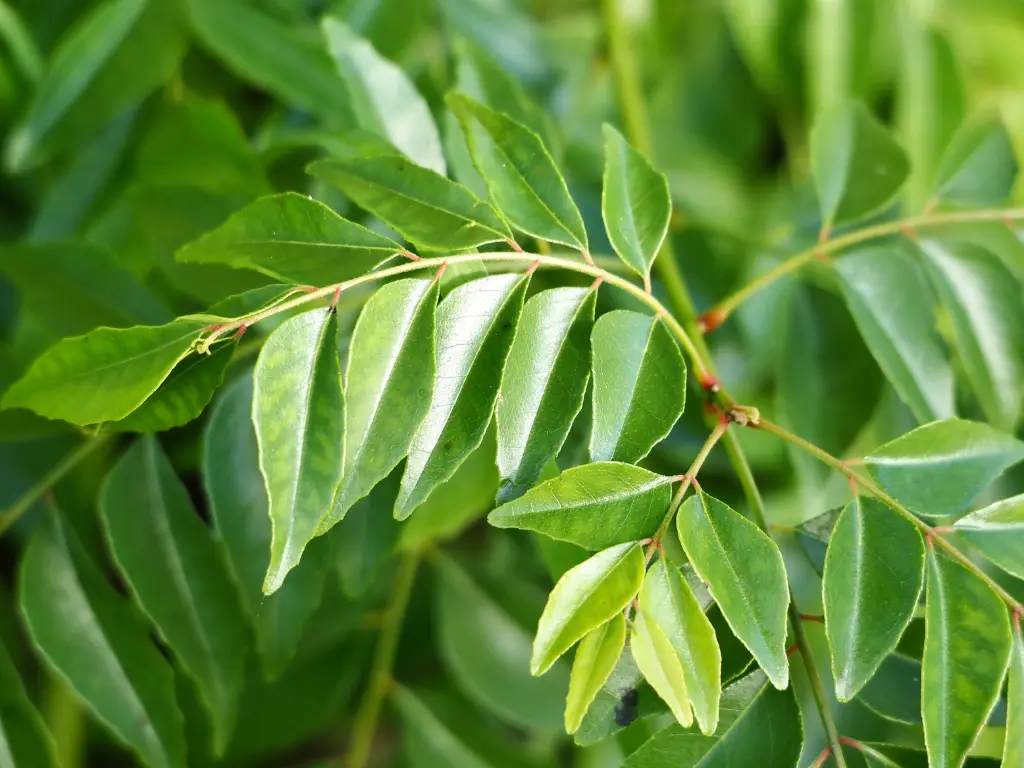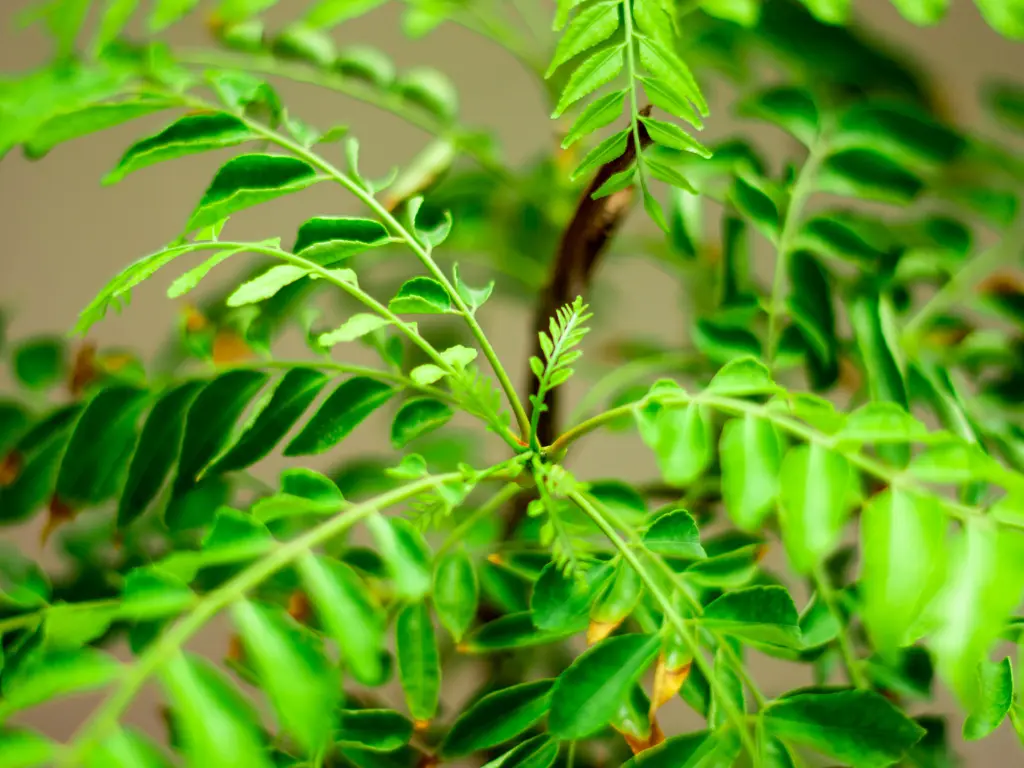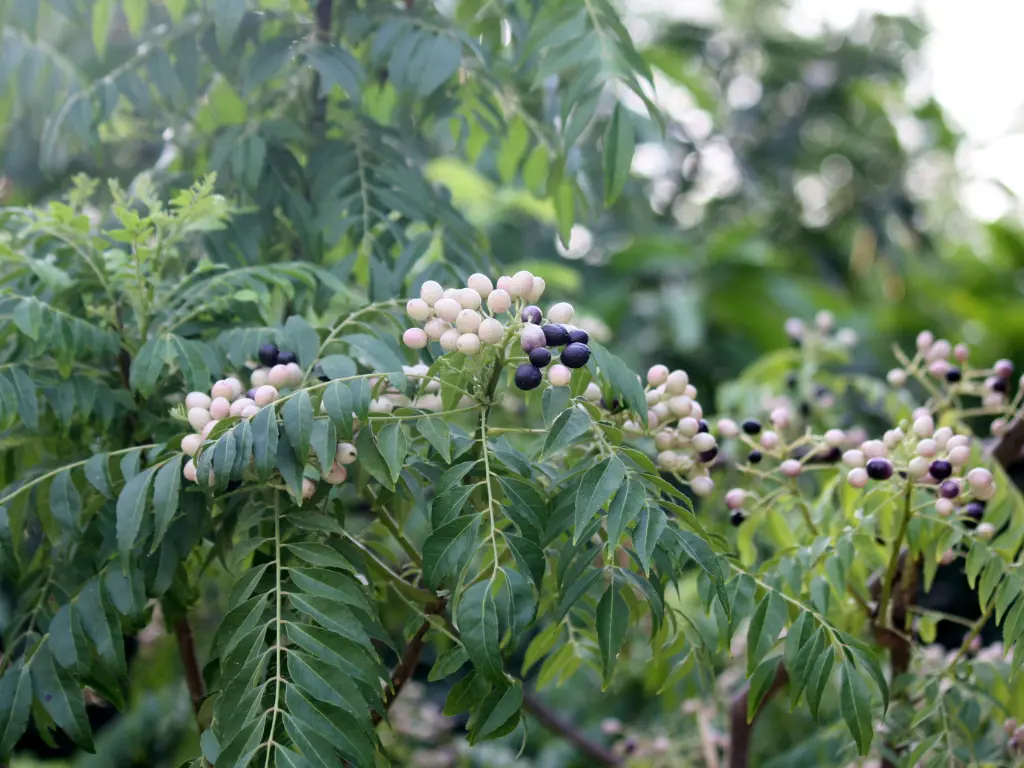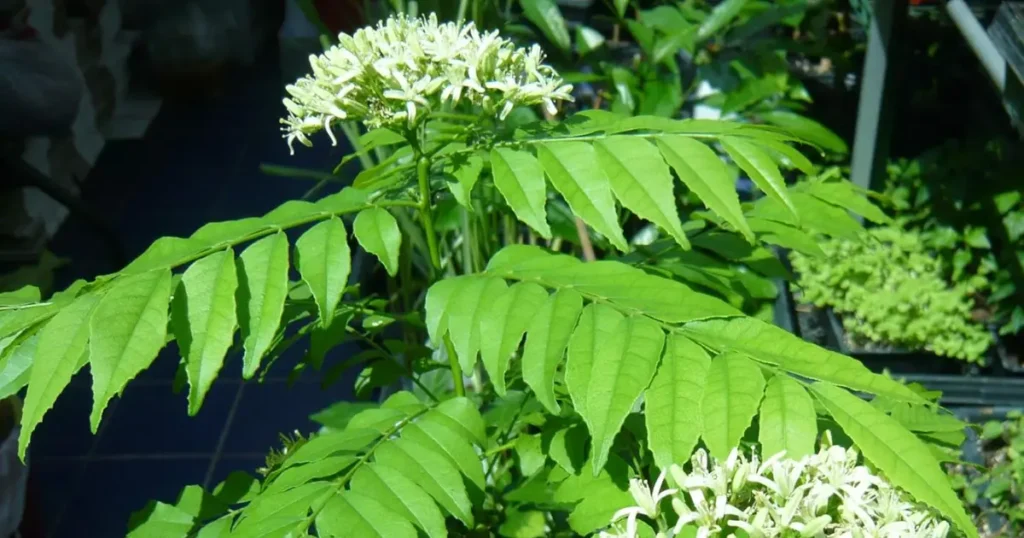Blog
Top Reasons to Grow Your Own Curry Leaf Plant at Home
Have you ever walked through your local grocery store and noticed the small bundles of curry leaves tucked away in the herb section? You might have seen them as just another exotic ingredient, but did you know that growing your own curry leaf plant could be one of the best decisions you make for your home, health, and kitchen? Whether you’re a gardening enthusiast or someone who loves cooking with fresh, aromatic ingredients, growing your own curry leaf plant has so many benefits that might just surprise you.
In this article, we’ll dive into why you should consider growing curry leaf plant, sharing everything from its amazing health benefits to practical gardening tips. You’ll learn how to easily cultivate this aromatic herb and how it can elevate your meals in ways you never imagined. Plus, you’ll discover how growing curry leaves at home can enhance your well-being and bring a little touch of greenery to your living space.
Health Benefits of Growing Curry Leaf Plant

If you’ve ever wondered if those curry leaves sitting in your spice cabinet can actually do more than just make your curry taste better, you’re in for a treat. Curry leaves aren’t just for flavor; they offer a wealth of health benefits that make them even more worthwhile to grow yourself.
1. Boost Digestion and Metabolism
Let’s face it, digestive issues can be a real pain. Bloating, constipation, indigestion,…sound familiar? Well, curry leaves could be the solution you’re looking for. These small but mighty leaves are known for their ability to stimulate digestive enzymes, helping your system break down food more efficiently. Growing your own curry leaf plant ensures that you always have access to fresh leaves that are rich in fiber, which plays a crucial role in maintaining a healthy digestive system.
-
Digestive Health: Regular consumption of curry leaves is known to relieve bloating, gas, and constipation. They even help improve overall gut health, making digestion smoother.
-
Boosts Metabolism: The fiber in curry leaves helps regulate your metabolism, keeping things moving smoothly and promoting healthy digestion.
Not only do these benefits help with day-to-day discomfort, but adding curry leaves to your diet could lead to long-term digestive well-being. Plus, it’s a natural solution with no side effects!
2. A Natural Remedy for Hair Health
Want to have stronger, shinier hair? Curry leaves can help with that too! These leaves are rich in beta-carotene, protein, and essential vitamins like vitamin C, which all contribute to nourishing your scalp and preventing hair loss.
-
Prevents Hair Loss: Curry leaves are packed with nutrients that strengthen your hair follicles and scalp, helping to reduce hair thinning and loss.
-
Encourages Hair Growth: By using curry leaves in hair treatments, you can stimulate new hair growth and restore vibrancy to tired locks.
Imagine being able to make your own hair oil or treatments right from your garden! Growing a curry leaf plant means you’ll always have a fresh, natural remedy for your hair, right at your fingertips.
3. Antioxidant-Rich for Overall Wellness
Curry leaves are packed with antioxidants, which play a vital role in protecting your body from free radicals that cause premature aging and chronic diseases. Antioxidants help protect your cells from damage, boosting your immune system and improving your overall health.
-
Cancer-Fighting Properties: The antioxidants in curry leaves have been linked to a lower risk of certain types of cancer, making them a powerful natural defense.
-
Anti-Inflammatory Effects: The anti-inflammatory compounds in curry leaves can help reduce swelling, pain, and discomfort in the body.
Having a curry leaf plant at home means you’re growing a natural source of antioxidants that help keep you healthier every day.
How to Grow and Care for Curry Leaf Plant

If you’re ready to start growing your own curry leaf plant, let’s talk about the basics.
1. Choosing the Right Location
Curry leaf plants thrive in sunny spots. They love warmth and can handle both outdoor and indoor environments, but you’ll need to make sure they get enough light. If you’re growing the plant indoors, try to place it in the sunniest area of your home.
-
Outdoor Growth: If you live in a region that gets plenty of sunlight, plant your curry leaf in a garden bed where it can bask in the sun for 4 to 5 hours each day.
-
Indoor Growth: If you’re growing your plant indoors, make sure it gets enough light. A south-facing window is ideal, or you can use grow lights to give your plant the light it needs to thrive.
2. Soil and Watering Tips
The key to a healthy curry leaf plant lies in good soil and proper watering. Curry leaves prefer well-draining soil, so it’s important to use a soil mix that allows water to flow through easily. Be sure to water the plant regularly, but never let it sit in standing water, as this can lead to root rot.
-
Soil: A mix of loamy soil with a little sand for drainage works best. The soil should also be slightly acidic for optimal growth.
-
Watering: Curry leaf plants enjoy moisture but dislike soggy conditions. Water them consistently, but allow the soil to dry out between waterings.
3. Dealing with Pests and Common Problems
Like all plants, curry leaf plants can attract pests such as aphids and spider mites. Check your plant regularly for signs of pests or disease, and treat them with organic solutions like neem oil or insecticidal soap. If your curry leaves are turning yellow or curling, it may be a sign of watering issues, nutrient deficiencies, or pests.
-
Pests: Organic pest control methods like neem oil or garlic spray are effective and safe for your plant.
-
Leaf Problems: Ensure the plant is getting the right amount of water and sunlight to prevent leaf damage.
By taking care of your curry leaf plant with just a little attention, you’ll be rewarded with a steady supply of fresh, aromatic leaves all year round.
Read full guide here: Curry Leaf Plant Care: The Ultimate Guide for Healthy Growth
Culinary Uses of Fresh Curry Leaves
1. Elevate Your Cooking
Curry leaves are a fundamental ingredient in Indian, Southeast Asian, and Mediterranean cuisines. The leaves impart a distinct fragrance and flavor to dishes, especially curries, soups, and stews. Fresh curry leaves are far superior to dried ones, both in flavor and nutritional value.
-
Flavorsome Dishes: Curry leaves are used in everything from biryanis and dals to stir-fries and chutneys.
-
Versatile Use: You can also use them in smoothies, salads, and even make curry leaf tea.
2. Harvesting Fresh Curry Leaves
Harvesting fresh curry leaves is easy. Simply snip off the leaves from the branches as needed. Be sure to remove the older leaves, allowing new growth to flourish. You can store the leaves in a cool, dry place or freeze them for long-term use.
3. Storing Curry Leaves
If you find yourself with an abundance of curry leaves, you can store them for later use. To keep them fresh, you can freeze them or dry them to preserve their flavor. Dried curry leaves can be used in cooking, while frozen leaves retain their fragrance and texture better for longer-term use.
Indoor vs. Outdoor Growth: Which is Best for You?

Now, you might be wondering should I grow my curry leaf plant indoors or outdoors? The answer depends on where you live and the space you have available.
1. Indoor Growth
If you live in a colder climate or don’t have outdoor space, growing curry leaves indoors is a great option. Just make sure to place your plant in a bright, sunny spot, and consider using grow lights if needed.
2. Outdoor Cultivation
For those who live in warm, sunny climates, outdoor growth is ideal. Curry leaf plants can grow quite large, so make sure you have enough space for them to spread out.
3. Best Climate for Growth
Curry leaf plants thrive in tropical and subtropical climates with warm temperatures and humidity. If you’re growing the plant indoors, try to keep the room temperature between 70-85°F (21-29°C) for optimal growth.
Conclusion
As you can see, growing your own curry leaf plant comes with numerous benefits—health improvements, delicious meals, and an eco-friendly way to enhance your home. Whether you’re looking to boost your digestion, support hair growth, or simply enjoy fresh herbs at your fingertips, the curry leaf plant is a fantastic addition to your garden or kitchen.
So why wait? Grab a pot, pick up a small curry leaf plant, and start cultivating this wonderful herb today. The benefits you’ll reap from fresh, organic curry leaves will make every dish taste better and every day a little healthier.
Frequently Asked Questions (FAQs)
Q1: How long does it take for a curry leaf plant to grow?
It typically takes about 2-3 years for a curry leaf plant to reach full maturity, but you can start harvesting leaves within the first year once the plant is established.
Q2: Can I grow curry leaves indoors?
Yes, curry leaf plants can thrive indoors as long as they get enough light. Place them near a south-facing window or use grow lights if needed.
Q3: What are the best soil conditions for growing curry leaves?
Curry leaves prefer well-draining, slightly acidic soil. A mix of loamy soil with a bit of sand for drainage works best.
Q4: Are curry leaves good for health?
Absolutely! Curry leaves are rich in antioxidants, vitamins, and minerals that support digestive health, promote hair growth, and even help fight inflammation.
You may like:


7 Vegetables to Plant in December for a Bountiful Winter Harvest
Winter gardening is a challenge many new gardeners shy away from. But if you’re among [...]
Dec
9 Common Christmas Cactus Problems and How to Fix Them
Have you ever walked past your Christmas cactus and wondered why it suddenly looks sad? [...]
Nov
Swedish Ivy Care: How to Grow a Healthy, Thriving Plant
Have you ever looked at your Swedish Ivy and wondered why the leaves are turning [...]
Nov
Avoid These 10 Garlic Planting Mistakes for Bigger, Healthier Bulbs
Growing garlic at home is one of the most satisfying things a gardener can do [...]
Nov
How to Prevent Christmas Cactus Bud Drop: Tips for a Healthy Bloom
Have you ever noticed your beautiful Christmas cactus (Schlumbergera) starting to lose its buds just [...]
Nov
Discover 7 Stunning Types of Night-Blooming Cereus
Have you ever waited for a flower that only opens at night and then disappears [...]
Nov